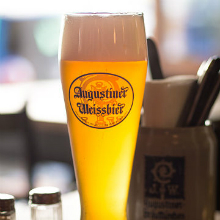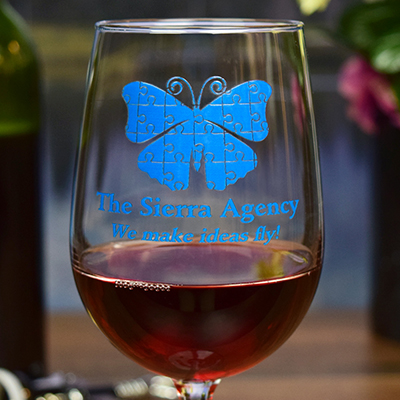A Look at the History and Types of Wheat Beer
A Look at the History and Types of Wheat Beer

The Origins of Wheat in Brewing
Wheat has likely been used as a grain for brewing since the Babylonian times or earlier. Ancient Egyptian hieroglyphics found in several Egyptian tombs illustrate two different grains. The earliest civilizations to utilize agriculture most likely harvested all sorts of grains and brewed with whatever was available that particular season. The Bavarian style of Germany is typically considered the origin of the modern wheat beer.
Types of Wheat Beers
- Weizen, Weizenbier, Weissbier
- These names all refer to the same type of wheat beer. Weizens are characterized by their golden orange color, consist of a top fermented ale containing up to fifty percent malted wheat. They are known for their quite fruity flavor. They are not known for having an overwhelming hop flavor, and are not as bitter as hoppier beers can be.
- Hefeweizen
- Hefeweizens are Weizenbiers with a twist. Usually, they are more carbonated due to a higher dose of yeast. They are known for their cloudy appearance.
- Kristallweizen
- These are Weizenbiers that have filtered the yeast out of the beer. From the german word for "crystal", they are not cloudy like a Hefeweizen and are instead clear.
- Dunkelweizen
- Dunkelweizens are known for their intense malt flavor and dark appearance.
- Weizenbock
- A stronger, darker Weizen,typically brewed in the fall and consumed in the spring.
- Berliner Weiss
- These are not really comparable to a Weizen at all. They are light and tart, and extremely carbonated. They deliberately incorporate a bacteria into the brew that produces lactic acid, which gives these beers a unique flavor.
- American Wheat Beer
- Top fermented, this ale is not fruity like the typical Bavarian style beers are known to be. Commonly used as a base for other fruity beers.
- Belgian Wit
- Belgian Wits are typically unmalted. They have their own distinct taste, lack the malt flavor and consist of bottom fermented ale.
A Bit of History
Weizenbiers have been brewed for over 600 years. The Degenberger clan had exclusive rights to brew the style for decades until they died out. This is comparable to patents in today's world. This privilege was then passed on to the Bavarian Dukes. In 1589, Bavarian Duke Maximillian I built the "Hofbräuhaus am Platzl" which to this day still occupies the location of the Ducal Weissbier brewery. The light colored Weissbier, german for white beer, was the choice of drink for all citizens, noble or peasant.
Due to improvements to barley malt beers in the 1700's, the popularity of Weizenbiers declined. By the middle of the 19th century,hardly anybody was drinking Weizenbiers. A man named George Schneider used his ownership of the Munich brewery as leverage to release the Weissbier rights to the public. By 1872, Weizenbiers could be brewed by anyone and production was no longer controlled by the royal government.
By this time, with huge advancements in brewing techniques and production, Bohemiam lager was increasing quickly in popularity and it seemed the future of the Weizenbier was in jeopardy once again. But, as these trends tend to be cyclical, Weizenbiers popularity rose again following World War II. Today, Weizenbiers account for a significant portion of all beer sold in Bavaria and Germany in general
Bavarian Weizen Flavor Profile
Be careful pouring an authentic Bavarian Weizen, they are highly carbonated and come with quite a foamy head. Its aroma is distinctly associated with its style. They are known for their fruity smell, which is often compared to vanilla or bananas. There is literally no hoppy aroma to be found.
The taste is also distinct to the beer. First a subtle malty flavor is presented, which is complemented nicely by a spicy bite due to this beers high carbonation and fruity flavor.
The American Connection
In the mid 1980's, the Widmer Brothers began brewing Bavarian style Weizens in Portland, Oregon. They were one of the first to brew this style here in America. They struggled to manage two different strains of yeast and began using the more neutral Altbier yeast. It was not as spicy as the authentic yeasts they began using, but their Hefeweizen was a big hit in the U.S nonetheless. Most American wheats were inspired by the Widmer Brothers Hefeweizen.
Conclusion
An authentic Bavarian Weizen is a truly delectable drink for your tastebuds and nostrils. Known for their fizzy pour, beautiful golden color, and complex fruity taste and aromas, this beer is sure to please. It is known to be an aquired taste, but once you fall for it you may find yourself struggling to enjoy other types of beer ever again.
Enjoying anything should be a holistic experience. A great steak cooked at home can be a delicious meal, but cannot compare to the total experience of a nice Porterhouse, prepared by a professional chef, served in the atomsphere of a fine steakhouse, and presented on a beautiful plate with all the side dishes and garnishes. Likewise, a great beer will never fulfill its potential if served in a paper cup. Great beers deserve great casks. Consider serving yours in your own personalized beer glasses. You won't regret it.



